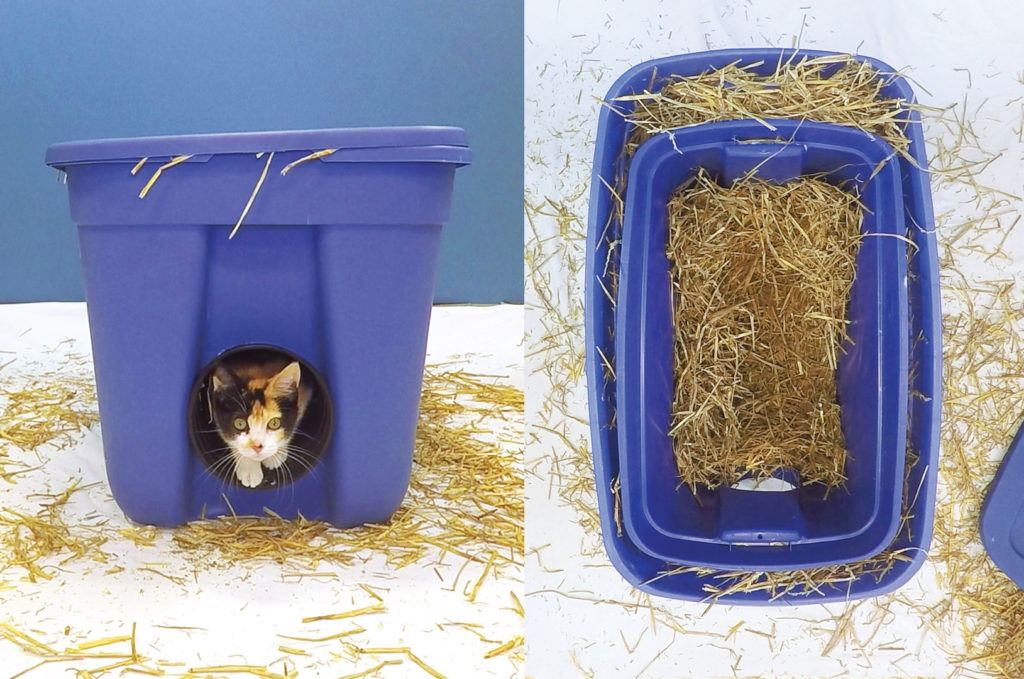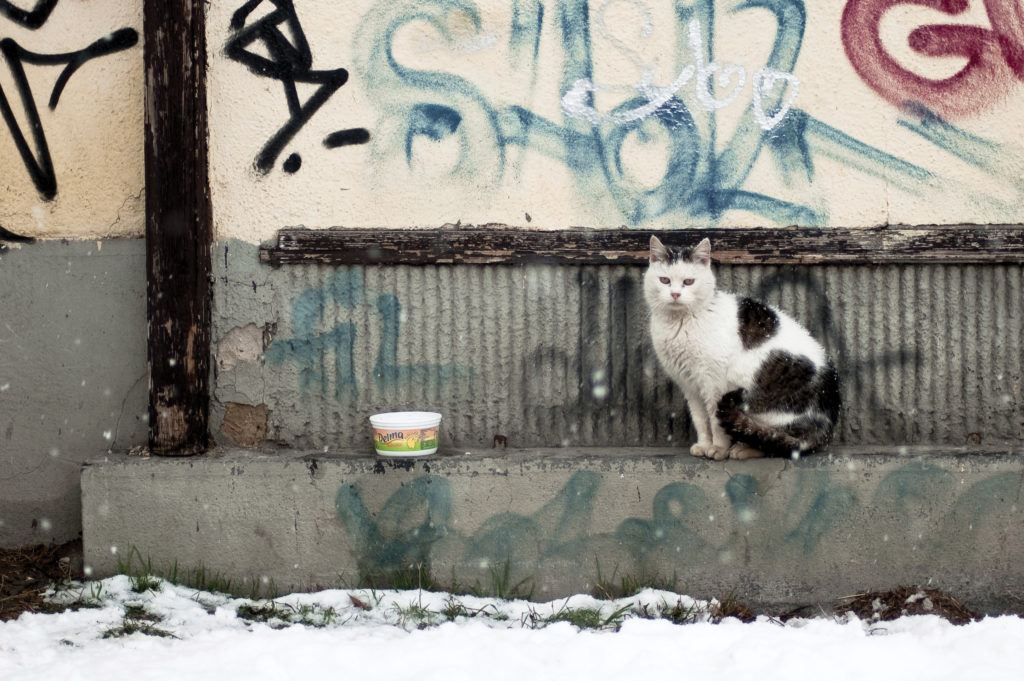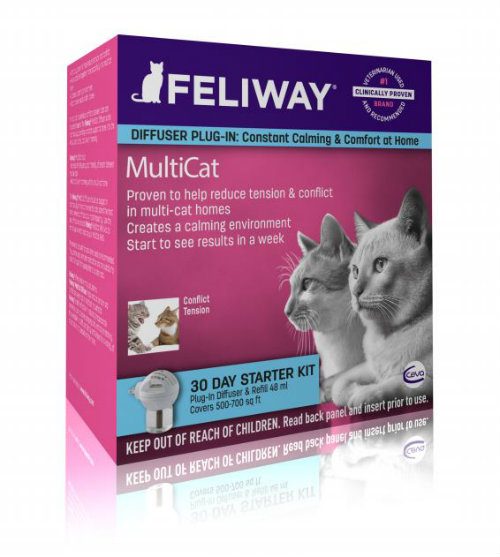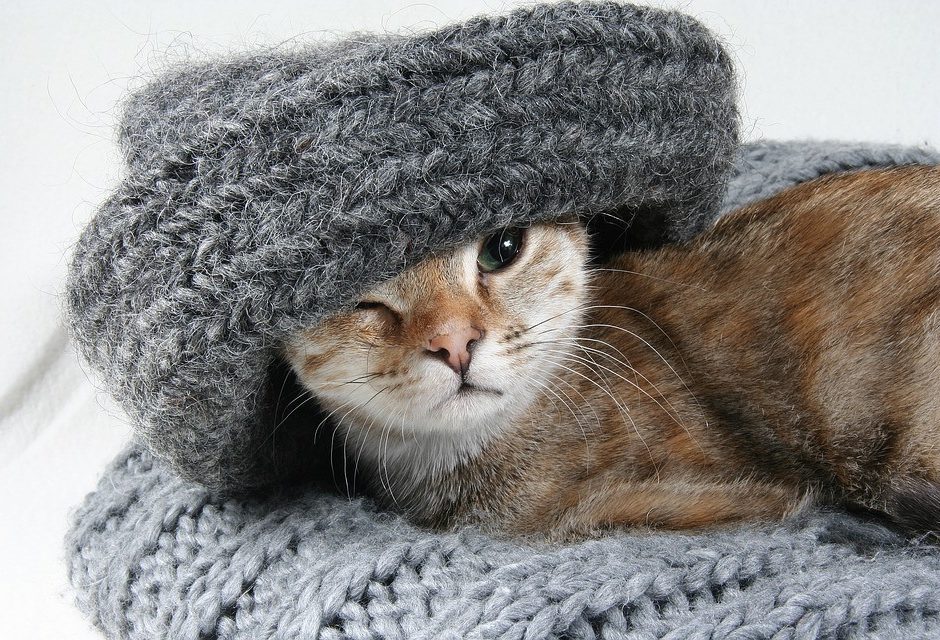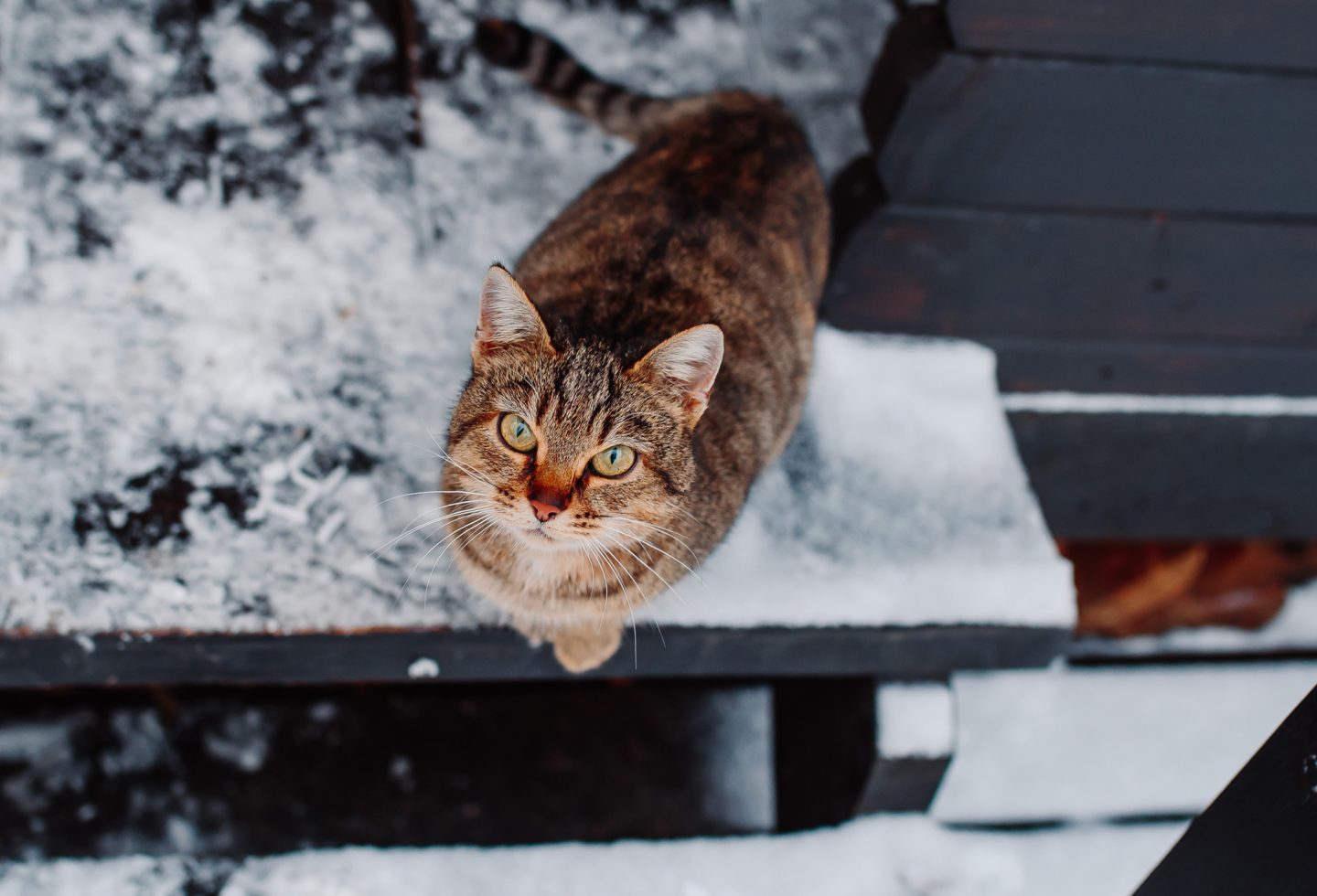
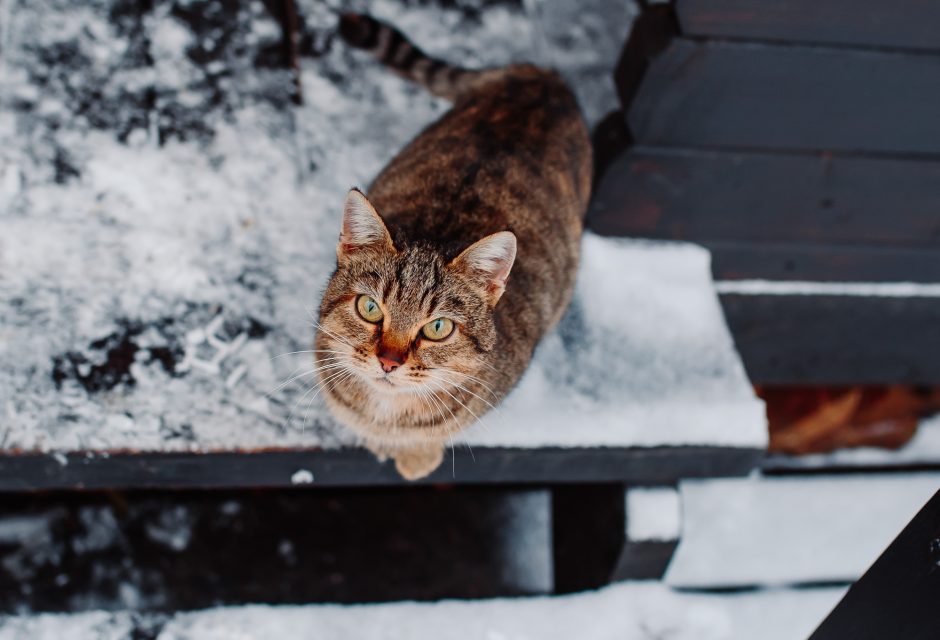
How to Help Feral Cats in the Cold Winter Months
4 simple ways to help outdoor community cats during the winter
When temperatures begin to drop, many of us find ourselves worried about the outdoor cats in our neighbourhoods. Are they okay out there? How cold is too cold for a stray cat? And how can we keep cats safe in the cold?
Cats are resilient, but they can always use a hand staying warm and healthy during cold weather, says Becky Robinson, president and founder of Alley Cat Allies, an organization dedicated to protecting and improving cats’ lives. “Cats live and thrive outdoors in all kinds of climates,” she notes. “But a little extra help during the winter months can go a long way for protecting community cats.”
Alley Cat Allies recommends four simple ways people can make life outdoors even more comfortable for community cats during the winter.
4 Simple Ways to Help Outdoor or Feral Cats in the Cold Winter Months:
#1 Provide Warm Shelter for Outdoor Cats
Protect from the Cold
- Provide shelters to keep cats warm.
- These can be easy and inexpensive to build yourself, or can be purchased pre-made online. Check out a do-it-yourself shelter video at alleycat.org/resources/how-to-build-an-outdoor-shelter—all you need to build a cozy cat shelter is two plastic tubs (one smaller than the other), Styrofoam, a plastic potted plant container, a hair dryer, and an X-Acto knife.
- Insulate shelters with straw. Not only is straw inexpensive and easy to come by (just check your local pet supply store or garden center), but straw repels moisture. Avoid using fabric blankets or towels because they absorb moisture and can make the interior colder.
- Remove snow from all shelter entrances and exits. It’s important to keep cats from getting snowed in.
#2. Check Your Car For Cats Before Starting It
Knock Before You Drive—It Can Be Lifesaving
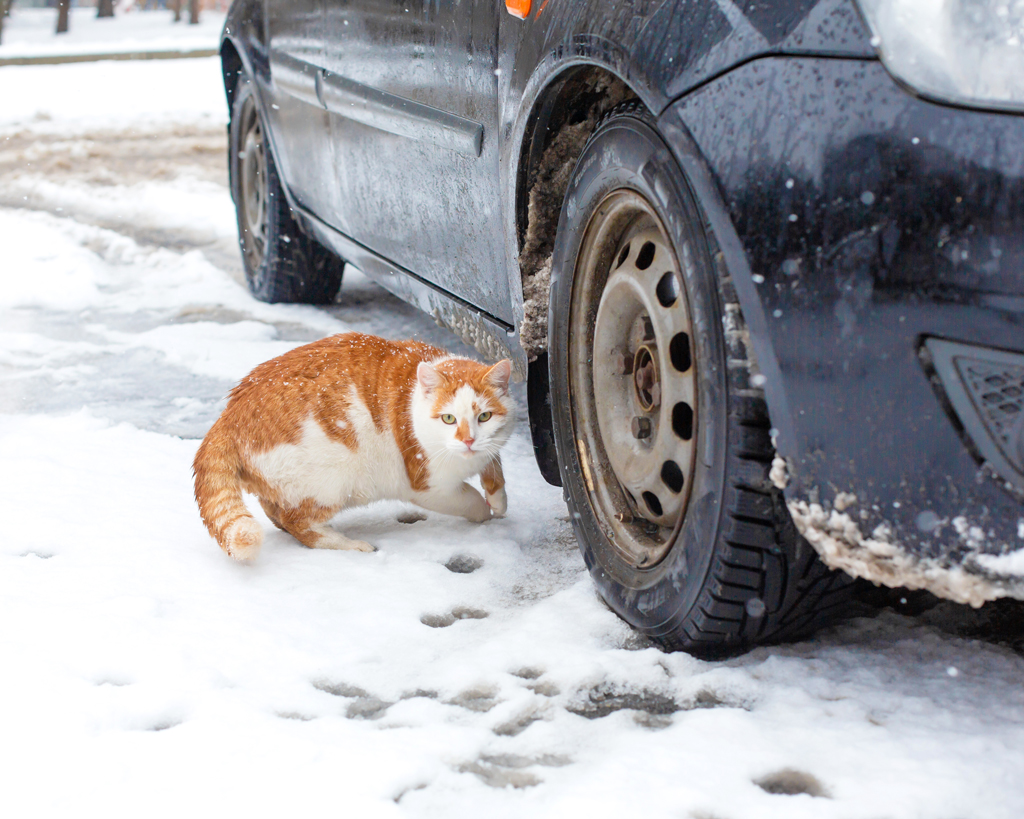
Kukota/Bigstock
- Do not use antifreeze, which is deadly to felines, in an area accessible to cats. Keep antifreeze out of reach and clean up spills. Most antifreeze brands use ethylene glycol as the main ingredient so be sure to switch to a brand made with propylene glycol because it is less toxic.
- Refrain from using salt and chemicals to melt snow. These can be lethal when licked off paws or ingested from melting puddles. They also hurt a cat’s paw pads. Pet-friendly de-icers are available at most pet stores.
- Tap the hood before you drive. Give the hood of your car a few taps before starting it to make sure that a cat has not hidden underneath the car or inside the engine for warmth. Also, always check between your tires and wheel wells.
#3. Put Out Food and Water for Outdoor Cats
Increase and Check Often
- Increase food portions to help cats conserve energy and stay warm. Canned or wet food, which takes less energy to digest, should be in plastic (non-metal) or heated containers. Dry food, which will not freeze, also works.
- Keep water from freezing to prevent dehydration. To keep water drinkable, use ceramic (crock) or plastic bowls that are deep rather than wide and place them in a sunny spot. Or use heated electric bowls. Avoid using metal bowls.
#4. Spay and Neuter
Improve Outdoor Cats’ Health

Elena Larina/Bigstock
Spaying and neutering improves cats’ overall health, and healthier cats are better equipped for the cold elements once winter arrives. However, if you’re conducting Trap-Neuter-Return (TNR), the only humane and effective approach to stabilize community cat populations, in the winter, follow these safety tips:
- Check the TNR traps frequently and provide a warm holding area pre-and-post surgery. If it’s too cold for you then it’s probably too cold for cats to be in traps exposed to the elements for extended periods of time. Keep traps covered and secured in a temperature-controlled vehicle or building.
- Ask your veterinarian to shave only a small area for the spay or neuter surgery. This will help the cats stay warm by maintaining maximum fur coverage.
Join the newsletter and never miss out on cat content again!
"*" indicates required fields
By clicking the arrow, you agree to our web Terms of Use and Privacy & Cookie Policy. Easy unsubscribe links are provided in every email.





